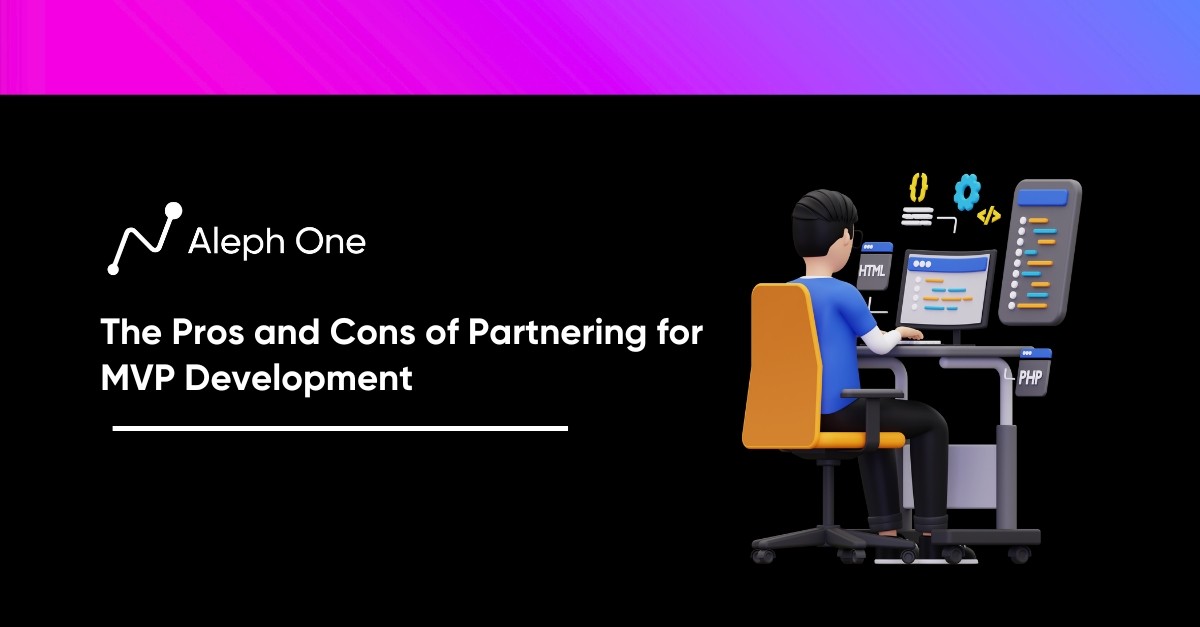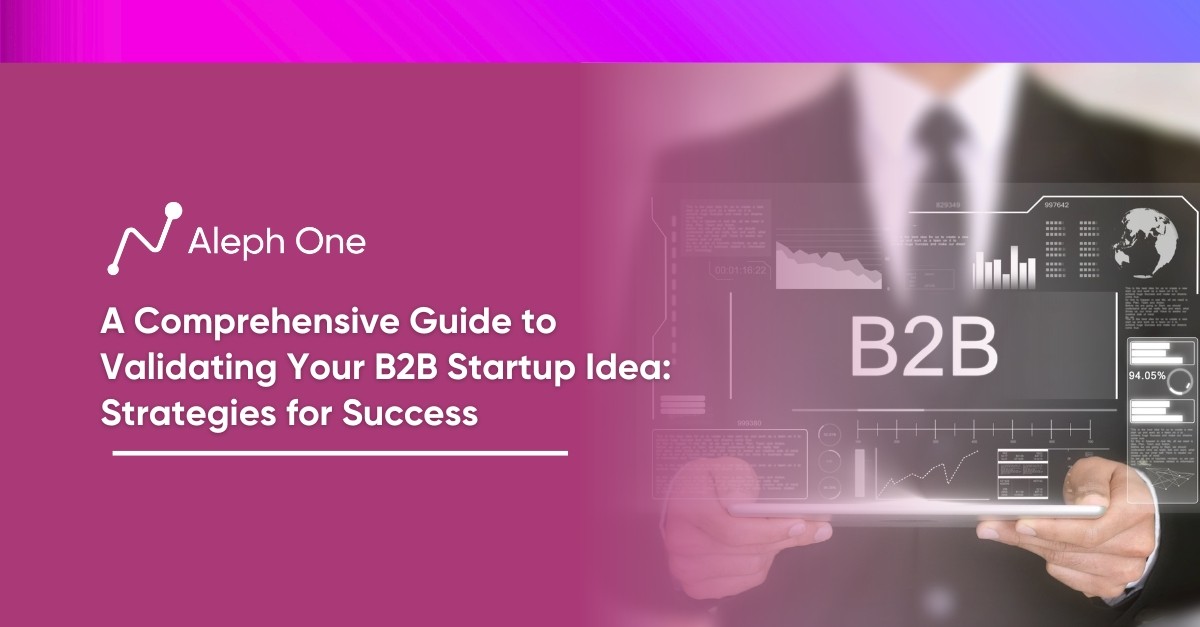Let’s work together to build something amazing. Share your project details and our team will reply to figure out the next steps to your success.

Choosing the right design partners is crucial to building a successful Minimum Viable Product (MVP). Startups must vet and select design partners who align with their vision, possess the necessary expertise, and fit their culture. However, finding the right balance between equity and speed is essential when considering a design partnership. This article explores identifying and choosing design partners, establishing a foundation for success through partnership agreements, leveraging feedback loops for maximum impact, providing reciprocal value to design partners, and following a framework for successful design partnerships. Case studies of successful design partnerships, such as Chime and Zumper, demonstrate the benefits of strategic collaboration and its impact on accelerating MVP development and securing funding. By carefully navigating the pros and cons of design partnerships, startups can optimize their chances of building innovative and successful products.

Find the Right Fit: How to Vet and Choose Design Partners
Choosing the right design partners is crucial to building a successful MVP. Identify potential partners through your network, local design communities, and freelance platforms like Upwork or Fiverr. Look for partners with experience in your industry and building the types of digital products you need.
Once you have a list of candidates, evaluate each one based on a few key factors:
Capabilities and Expertise
Review examples of their past work to assess their skills in user experience design, visual design, product design, or full-stack design. Ensure they have experience with tools like Sketch, InVision, and Figma you plan to use.
Shared Vision
Have initial calls with candidates to discuss your product vision, target users, and critical challenges. Look for partners who seem genuinely passionate about and aligned with your mission. They will be much more invested in your success.
Cultural Fit
Consider how well the partner communicates, how flexible and open they seem to feedback, and how enthusiastic they are about collaboration. Strong cultural fit leads to smoother partnerships and better outcomes.
Availability and Timeline
Discuss each partner’s current workload and availability to take on your project. Look for those who can commit the time required to meet your milestones. Be wary of partners who seem overextended.
Pricing and Budget
While cost is a factor, do not choose partners based primarily on price. Focus first on value, expertise, and fit. Then, negotiate a price that works for both parties based on the scope of your needs and their standard rates.
Once you have evaluated your options, narrow down to 2-3 top candidates. Have follow-up calls to discuss details of the partnership and then make your final selection. You will have a solid foundation to build an innovative MVP with the right partner. But establish a strong partnership agreement to set the collaboration up for success.
Establish a Foundation for Success: Best Practices for Partnership Agreements
Before diving into an MVP design partnership, it’s essential to establish a formal partnership agreement. This agreement should define the goals, scope, responsibilities, timelines, compensation, and other vital terms guiding your collaboration. Partnerships can easily lead to friction, wasted time, and broken relationships without a clear agreement.
Some of the most important clauses to include in a partnership agreement are:
Goals and Scope
Explicitly state the partnership’s goals and the design work’s scope. Will the partners be focused on UX design, UI design, or both? Define any out-of-scope work. This helps set shared expectations upfront.
Responsibilities
Clearly outline the responsibilities of each partner. For example, the startup may provide product context, user research, and feedback, while the design partner is responsible for wireframes, mockups, and iteration. Define communication cadence and channels as well.
Timelines
Establish concrete timelines for key milestones and deliverables to keep the project on schedule. Be sure to build in buffer time for feedback and changes. Timelines should match the pace of your startup.
Compensation
Determine appropriate compensation for your design partners, such as hourly rate, equity, or deferred payment. Compensation should be fair for the scope of work and partners’ expertise. Consider offering additional value beyond just financial compensation.
Intellectual Property
Clarify who owns the rights to designs, wireframes, and other partnership outputs. Typically, startups obtain full ownership and rights to use the materials for their business needs. Partners may retain the right to display work in their portfolio.
NDA
Include a mutual NDA to protect any sensitive business or product information shared between partners. Define any restrictions on the use or sharing of confidential information.
Confidentiality
Establish terms for ending the partnership, such as conditions for early termination or a minimum notice period. Discuss ownership of materials and the following steps to transition work if ending the partnership.
With a strong partnership agreement that addresses these key areas, startups and their design partners can build an innovative MVP without fear of mismatched expectations or a messy breakup. A good agreement is the foundation for a successful collaboration.
The Feedback Loop: How to Work with Design Partners for Maximum Impact
Soliciting regular feedback from your design partners is key to building an innovative MVP. However, feedback is only helpful if it’s actionable. It’s essential to provide context on your vision and target users so partners can evaluate solutions with the right perspective. Frame specific questions to guide their feedback and have them critique certain features or flows. For example, ask:
- Does this user experience align with our brand values?
- What’s missing or added in this workflow?
- How could we improve the accessibility of this interface?
With context and direct questions, partners can provide targeted feedback that shapes crucial decisions.
Shared Rough Drafts
It’s also vital to share rough drafts, wireframes, and prototypes with partners early and often. Have them experience the product concept firsthand, even if it must be fully built out. This helps them understand the overall direction and provides feedback at a stage when changes can still be made easily. Be open to feedback that challenges your assumptions—partners bring a valuable outside perspective.
Discuss Feedback
Discussing feedback together is critical. Set up calls or meetings to review the feedback, ask follow-up questions, and brainstorm solutions. Conversation helps clarify feedback, uncovers new insights, and spurs collaborative ideas. Be willing to iterate on solutions together in real-time. A tight feedback loop with multiple back-and-forth discussions will produce a far better product than a single round of static feedback.
Synthesize Feedback & Pivot
synthesize all the feedback to make critical decisions on features, user experience, branding, and more. Look for patterns in partner responses and weigh the pros and cons of different options. While you can’t implement every suggestion, the feedback provides a compass to guide your product in the right direction. Continually share how you applied the feedback with partners to keep them engaged.
A strong feedback loop is the hallmark of a successful design partnership. With context, direct questions, early draft sharing, open discussion, and a synthesis of feedback, you can work closely with partners to build an MVP that is innovative, user-friendly, and perfectly aligned with your vision.
Reciprocity: How to Provide Value to Your Design Partners in Return
For design partnerships to be sustainable long-term, they must be built on reciprocity. While partners contribute their time and expertise to help develop your MVP, you need to provide value in return. Some ways to offer value include:
Promotion
Featuring your design partners on your website, social media, and other marketing materials is an easy way to boost their visibility and credibility. You can highlight their role in helping develop your product and share examples of their work. Many startups have gained new clients through promotions from past partners.
Data Sharing
Once your MVP is in the market, share data and insights with your design partners about how customers engage with and respond to the product. This information is valuable for partners to understand user needs better and refine their services. However, be careful not to share any proprietary data.
Beta Access
If relevant, provide your design partners early access to your beta product. This allows them to experience the result of their contributions firsthand and will enable them to provide additional feedback. Early access to an innovative new product is a perk that many design firms appreciate.
Compensation
While compensation is essential, reciprocity extends beyond financial payment for services rendered. A reciprocal partnership where both parties benefit meaningfully leads to the most successful long-term relationships. If you fail to prioritize reciprocity, your design partners may feel undervalued and be less motivated to provide their best input and support. They may also be hesitant to partner with you again in the future.
To leverage design partnerships effectively, determine how to provide reciprocal value to match your partners’ offer. A partnership agreement should outline expectations around reciprocity to ensure both parties are satisfied with the relationship. With the right reciprocal framework, you can work with design partners for the long haul through multiple product iterations.
Tying it All Together: A Framework for Leveraging Design Partnerships
To successfully leverage design partnerships for MVP development, follow this basic framework:</p>
Identify and Choose Partners
Do your research to find designers and agencies with expertise in your industry and target users. Evaluate their portfolios, client reviews, and team experience. Meet top candidates to assess their vision fit and enthusiasm for your product. Choose partners that will challenge you and bring new perspectives.
Establish a Partnership Agreement
Codify the details of your engagement in a written agreement to avoid confusion and conflict. Define the scope, timeline, responsibilities, and compensation structure. Be specific about key deliverables, e.g., wireframes, prototypes, and branding guidelines. Discuss intellectual property ownership and non-disclosure terms. Review and sign the agreement with your partners before work begins.
Get Feedback
Gather feedback through an iterative process. Share your product vision, user research, and existing designs with your partners. Frame specific questions to guide their feedback, and be open to alternative solutions. Meet regularly to review new wireframes, prototypes, and ideas. Discuss feedback openly and make decisions together in a collaborative spirit. Repeat this process, incorporating insights from each round into the next version.
Synthesize Feedback
Synthesize feedback and make key product decisions. Analyze feedback from your partners and look for any common themes or suggestions. Determine which ideas should shape the next iteration and which should be saved for future releases. Make final calls on features, user flows, and the branding direction. Explain your thinking to your partners and get their input before moving forward.
Iteration and Validation
Continue rapid iteration and validation. Use an agile approach, building and testing a series of prototypes with your target users. Meet frequently with your partners to review user feedback and make adjustments. Release a functional MVP, then continue improving and optimizing based on usage data and customer input.
This framework provides a blueprint for startups to work successfully with design partners. You can build an innovative MVP faster and smarter by choosing the right partners, establishing a solid partnership agreement, facilitating an iterative feedback process, and making collaborative decisions. The result is a product co-created with your partners and validated by real customers.
The Results: Case Studies of Successful Design Partnerships
Chime
One successful example of an early-stage startup leveraging design partnerships is the mobile banking app Chime. Chime’s founders knew they needed to quickly build and iterate on their MVP to validate the concept. They partnered with design firm Anthropic to help develop their initial app prototype.
Anthropic and Chime
Anthropic worked closely with Chime’s team to understand their vision and user needs. The design firm then provided multiple wireframe options and feedback on key features and user flows. Chime synthesized this input to make strategic product decisions, and Anthropic handled the prototype’s visual design and front-end development.
This tight partnership and feedback loop allowed Chime to launch their MVP mobile app within six months. The prototype resonated strongly with initial users, helping Chime raise a $9 million seed round. Chime continued working with Anthropic to refine the app’s design and scale as the company grew.
Zumper
Another example is the real estate startup Zumper. The founders envisioned a mobile-first solution for finding and renting apartments but needed more internal design experience. They hired the product design firm IxDA to help develop their initial web and mobile apps.
IxDA and Zumper Partnership
IxDA collaborated closely with Zumper’s team, contributing UX research, wireframes, visual designs, and feature feedback. Zumper leveraged IxDA’s expertise to make key product decisions and launch their MVP website and app within four months. The results were so successful that Zumper raised $30 million in funding shortly after.
Zumper and IxDA continued working together for over two years, with IxDA helping scale Zumper’s product as they expanded into new markets. The close partnership and shared vision enabled Zumper’s rapid growth.
Choose the Right Partner to Accelerate Your Startup
By choosing experienced design partners that share their vision, providing a framework for collaboration, and offering value in return, startups like Chime and Zumper were able to accelerate their MVP development and gain the traction needed to raise substantial funding. Their success provides a model for any startup looking to leverage design partnerships.
Get the latest news and updates from Aleph One in your inbox.



